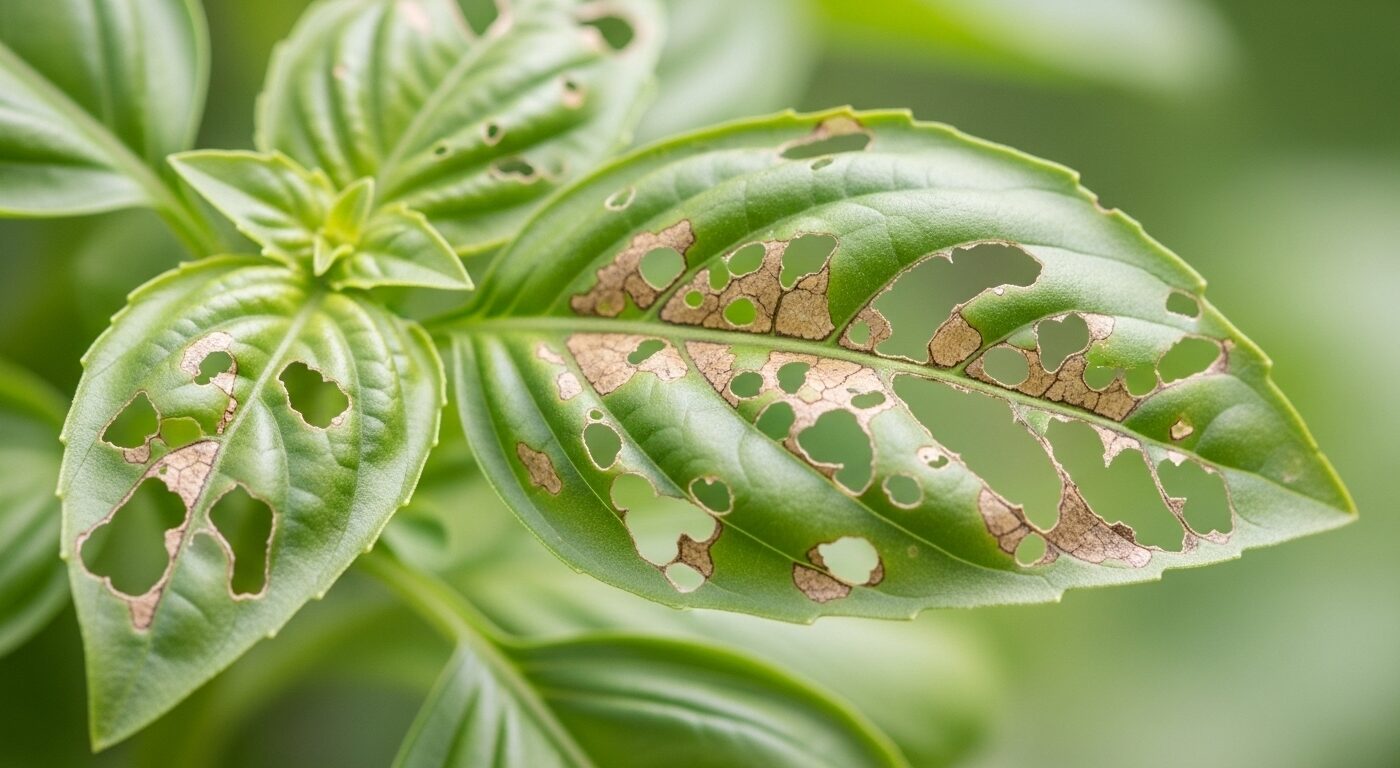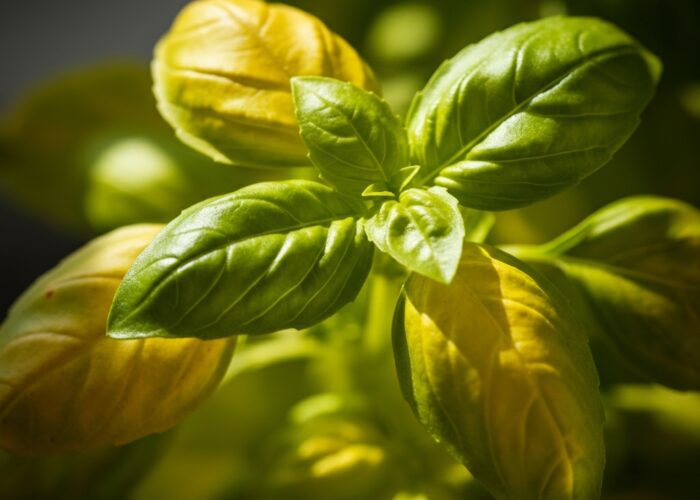What’s Eating Your Basil? Common Pests and How to Stop Them

Basil is a favorite in many kitchens thanks to its bold flavor and fragrant leaves, but it often falls victim to pesky garden insects. If left untreated, these pests can quickly damage your basil and significantly reduce your harvest. In this post, we’ll look at the most common pests that target basil and share natural, effective ways to keep your plants protected. With a few simple preventative steps and regular care, you can grow healthy, vibrant basil—whether it’s in a backyard garden or a small patio pot.
Among the top culprits are Japanese beetles, slugs, and aphids. Japanese beetles typically appear for about a month during the summer. They feed on basil leaves by eating around the larger veins, leaving behind a lace-like, skeletonized pattern. A simple way to control them is by hand-picking the beetles off your plants and dropping them into a container of soapy water to eliminate them without chemicals.
Common pests of basil
Aphids
Small green, black, or white insects clustered on stems and the undersides of leaves.
Damage: They suck sap, causing leaves to curl, yellow, and become distorted. Aphids also excrete honeydew, which attracts ants and leads to sooty mold.
Aphid Control Tips for Basil Plants
Spray with a mild soapy water solution (1 tsp dish soap in 1 quart of water). Use neem oil or insecticidal soap.
Encourage natural predators like ladybugs or lacewings. Remove with a strong spray of water or handpick.
Spider Mites
Tiny red or white mites often found on the underside of leaves, sometimes with fine webbing.
Damage: Speckled leaves, yellowing, and eventual leaf drop.
Spider Mites Control Tips for Basil Plants
Spray leaves with water regularly—mites hate humidity. Apply neem oil or insecticidal soap. Introduce predatory mites as biological control.
Slugs and Snails
Soft-bodied mollusks visible at night or early morning.
Damage: Ragged holes in leaves and slime trails.
Slugs and Snails Control Tips for Basil Plants
Set up beer traps (a shallow dish with beer). Use copper tape around pots or beds. Remove manually in the evening. Keep soil surface dry and free of mulch/debris.
Japanese Beetles
Metallic green and bronze beetles, about 1/2 inch long.
Damage: Skeletonized leaves (they eat all but the leaf veins).
Japanese Beetles Control Tips for Basil Plants
Handpick and drop into soapy water. Cover plants with row covers during peak beetle season. Use neem oil spray early in the morning.
Leaf Miners
Larvae that tunnel inside leaves, creating winding, white trails.
Damage: Affects photosynthesis, weakens plant health.
Leaf Miners Control Tips for Basil Plants
Remove affected leaves promptly. Use floating row covers to prevent adult flies from laying eggs. Spray neem oil to disrupt the larvae’s growth cycle.
Thrips
Tiny, slender insects that are often black or translucent.
Damage: Silvery or stippled leaves distorted new growth.
Thrips Control Tips for Basil Plants
Remove weeds that harbor thrips. Spray with insecticidal soap or neem oil. Introduce beneficial insects like minute pirate bugs.
Tips to Keep Basil Plants Pest-Free
Want to keep your basil thriving and bug-free? Here are simple, effective ways to prevent common basil pests before they become a problem:
Check your plants regularly for early signs of bugs or leaf damage.
Water at the soil level—not on the leaves—to reduce the risk of fungal infections.
Rotate your crops each season and avoid growing basil in the same spot every year.
Feed your soil with compost and organic matter to boost plant resistance naturally.
Skip the heavy fertilizers, especially those high in nitrogen—they can attract unwanted insects.
By following these preventative care tips, your basil can stay strong and healthy all season long. Whether you’re growing basil in pots, raised beds, or garden rows, early attention and good habits are the best defense against pests.




